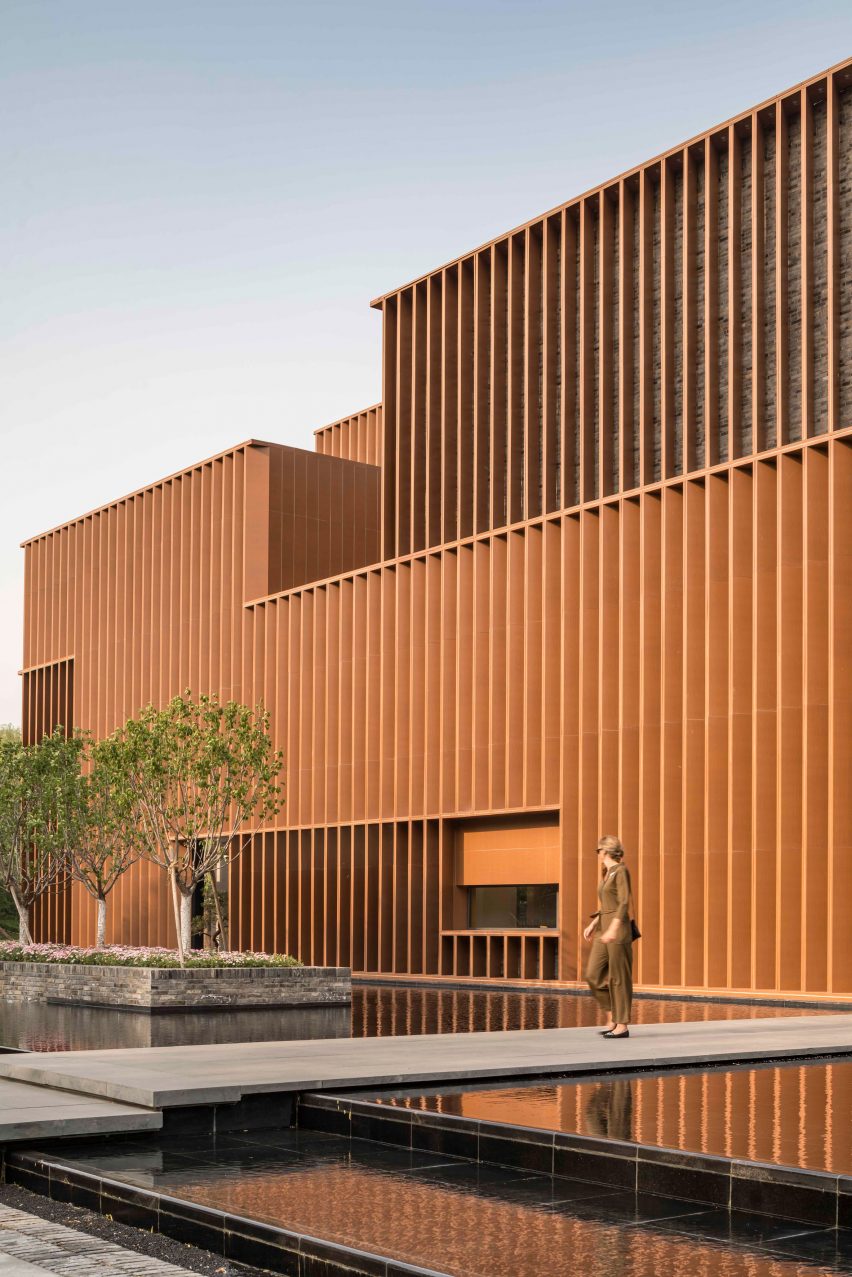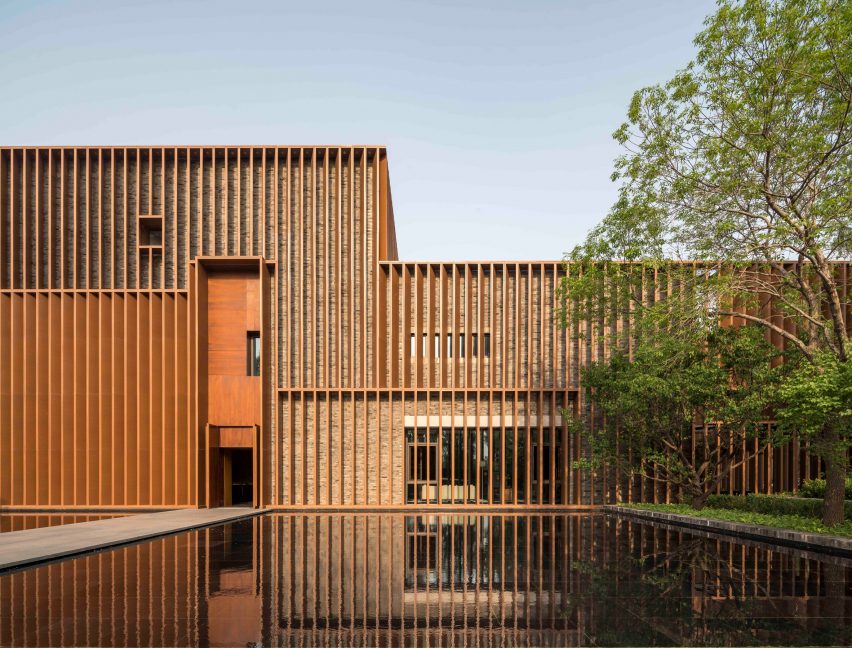Neri&Hu surrounds Junshan Cultural Center with angled aluminium louvres
Angled aluminium louvres cover the reclaimed brick walls of the Junshan Cultural Center near Beijing, China, designed by Neri&Hu.
Nestled amongst the mountains around Miyun Resevoir, the Junshan Cultural Center transforms an existing two-storey sales building that previously only contained conventional office spaces.

The overhaul was commissioned by a Chinese developer to improve the facilities and go beyond the limited offerings of a traditional sales centre by incorporating a mix of arts and cultural amenities for local people to enjoy.
Neri&Hu's introduced a series of public spaces that include a library, exhibition hall and a bar.

Gardens and courtyards are woven in between the buildings, to complement its mountainous setting.
"The client is a developer in China. As a group they have started to emphasise the need for a community centre that goes beyond the typical services that such centres often provide," said the studio's founders Lyndon Neri and Rossana Hu.

"The previous function of the building was purely for administrative office work, so given the programmatic shift, there needed to be a complete overhaul," they told Dezeen.
"They wanted to recreate the image of the building to represent their sophisticated lifestyle ethos. The old building was a typical object sitting on a landscape and we urged the client to have the building engage with the landscape more."

Neri&Hu's overhaul of the Junshan Cultural Center makes use of the existing building's concrete structure.
A few floor slabs were removed to create new openings, and a small section of the roof was lost to create a third storey.
It is now distinguished by a bright facade of aluminium louvres. These louvres enclose an inner facade of grey reclaimed bricks, which were chosen by Neri&Hu to reduce the building's visual impact.

Inside, all of the Junshan Cultural Center's interiors are positioned with views of the new outdoor spaces, which Neri&Hu has designed to blur the boundary between the outside and inside.
This sensation is enhanced by "extending the exterior landscape into the interior", where the same brick used to clad the building's facade also lines many of the interior walls.

"The building quietly rises out of the water as a brick mass with carved out spaces for programs interlocked with gardens that blur the boundary between inside and outside," explained the studio.
On the ground floor, visitors to the centre are greeted by a double-height reception provides access to multipurpose hall, sales reception and an art exhibition space, alongside a bar, business lounge and mix of outdoor spaces.

Above, the first floor hosts a library, which is designed to double as an events space and is lined with bookshelves and intimate reading nooks. This sits beside a sales area, bar, children's activity room and more offices and dining spaces.
The new second floor hosts a bar and rooftop deck to provide visitors with uninterrupted views of the surrounding mountains to the west of the site.

Throughout the building, these spaces are complete with a simple material palette of wood and stone detailing, teamed with the brick walls and soft lighting.
These pared-back finishes are designed for a "sense of understated luxury", and help to retain focus on playful sculptural ceilings, customised furniture pieces and brass metal furnishings that adorn the spaces.

Neri&Hu is a Shanghai-based design studio founded by Neri and Hu in 2004. Alongside architectural projects like Junshan Cultural Center, the practice also designs products such as lamps that emulate morning sun and art deco-inspired furniture.
Other recent buildings designed by the studio include the Aranya Art Center in Qinhuangdao, the Alila Bangsar hotel in Kuala Lumpur and the Tsingpu Yangzhou Retreat that references "traditional courtyard house typology".
Photography is by Pedro Pegenaute.